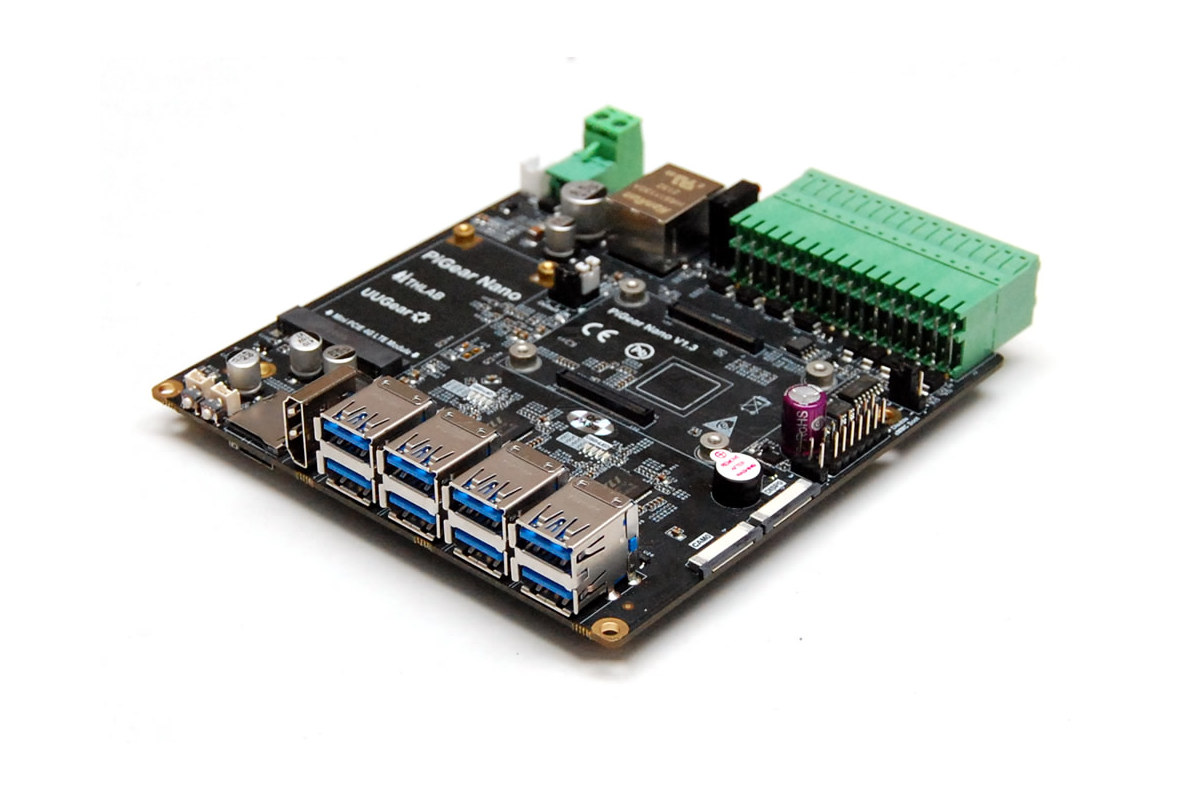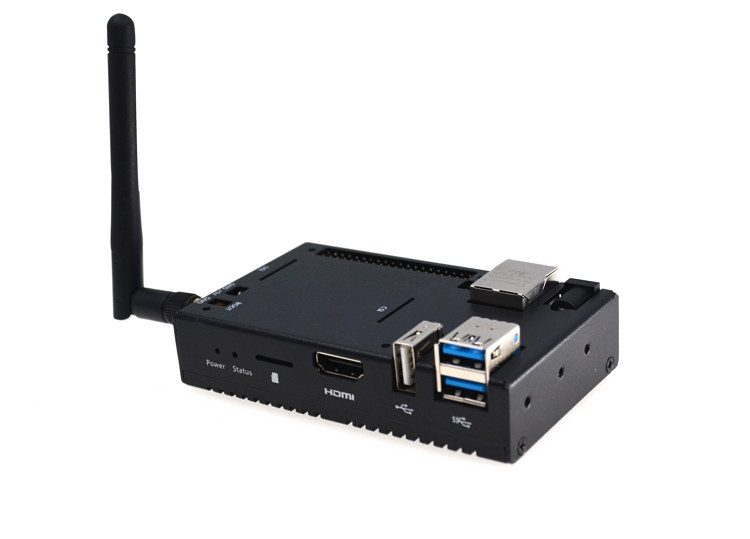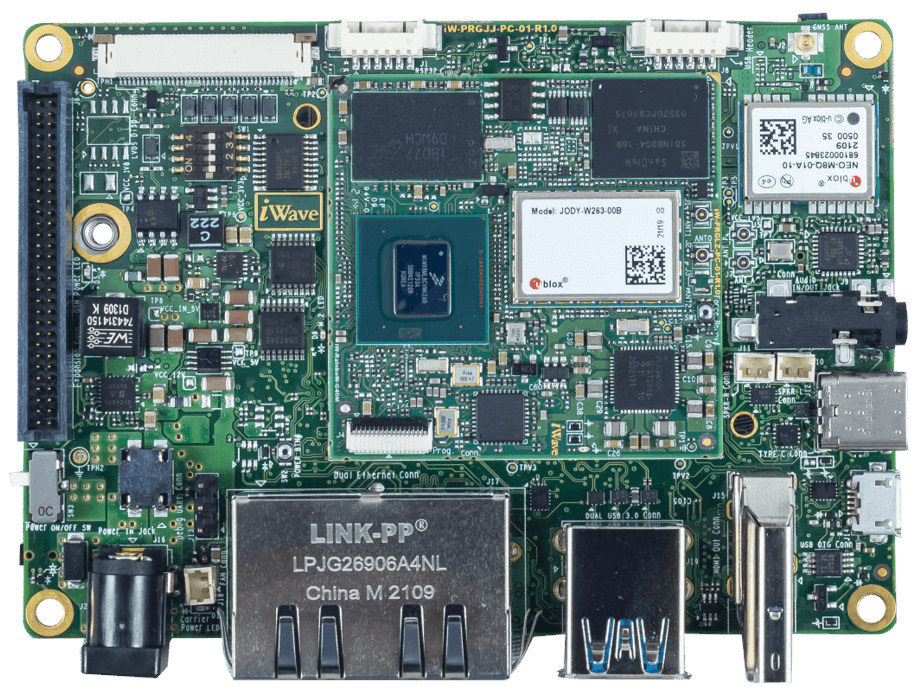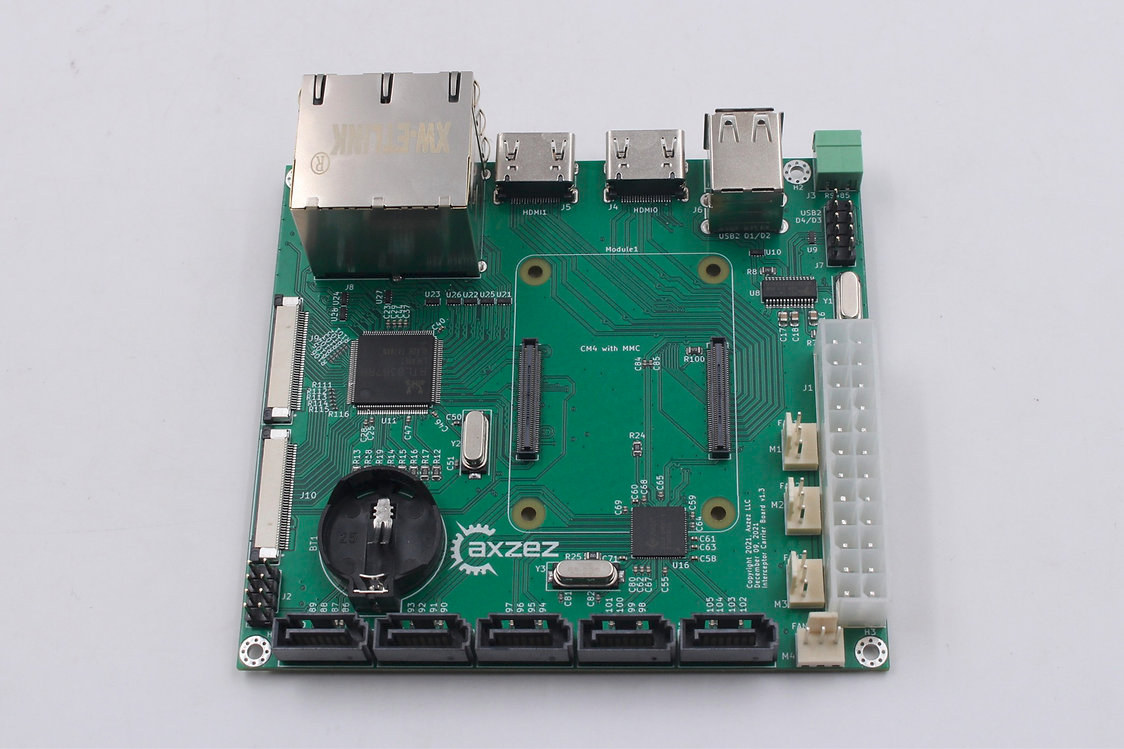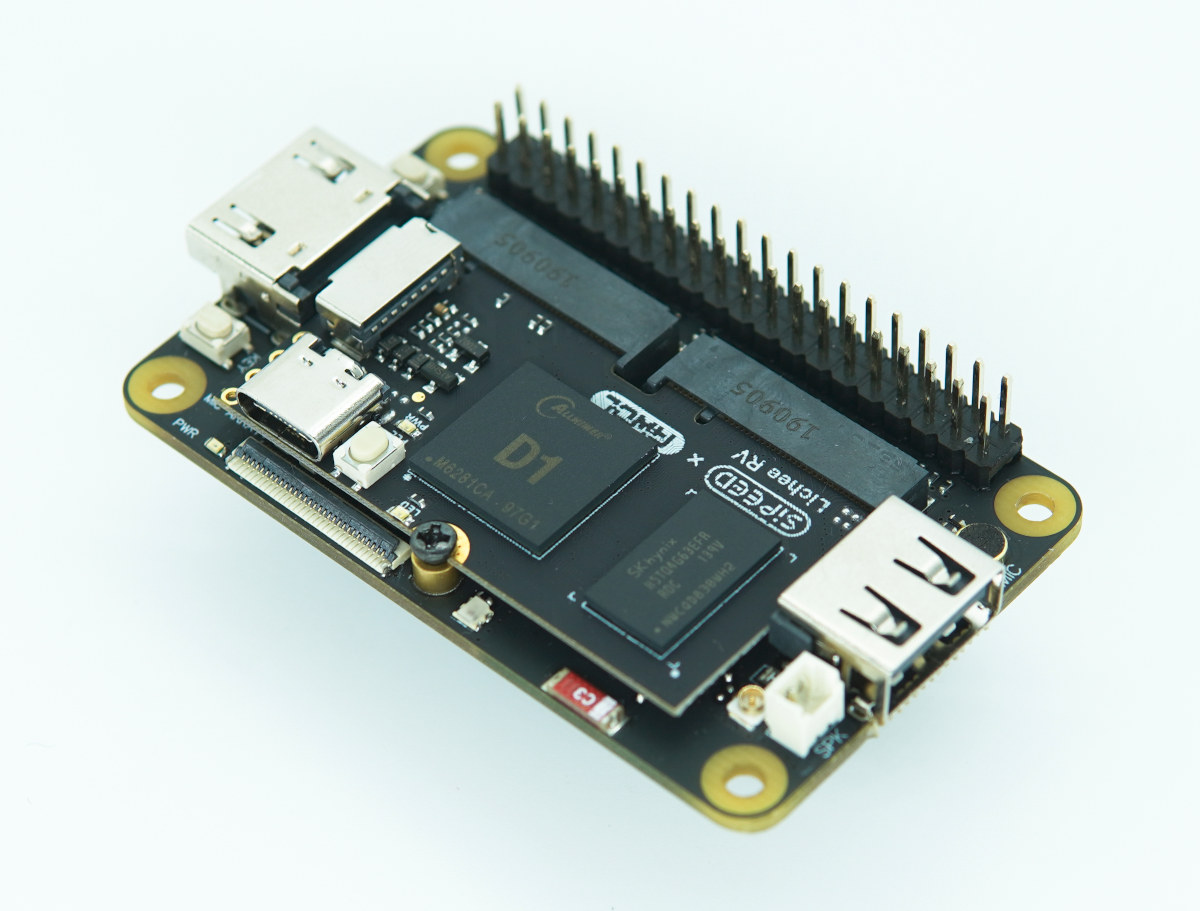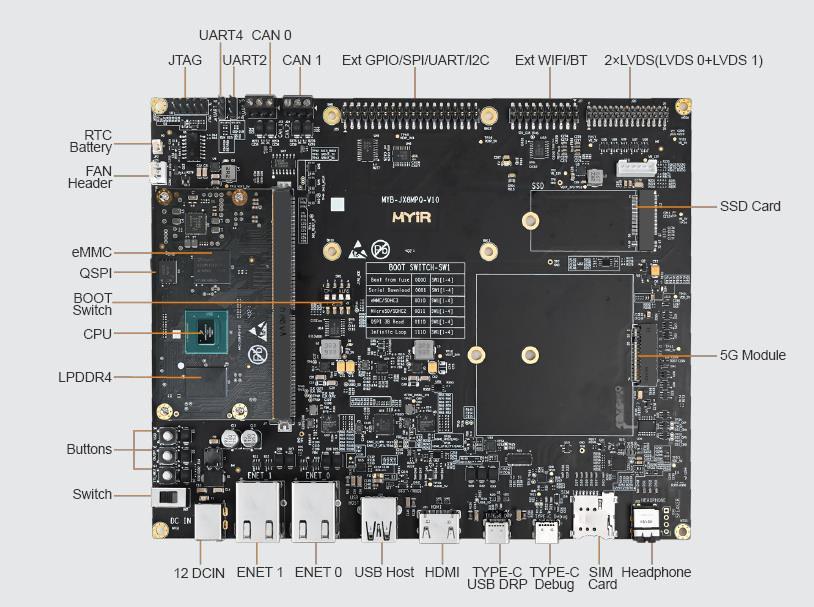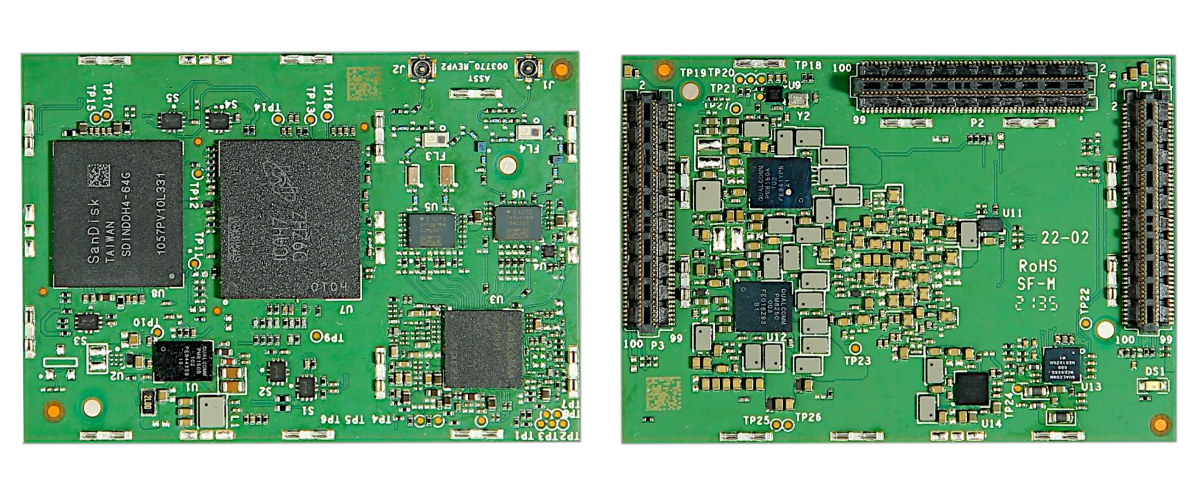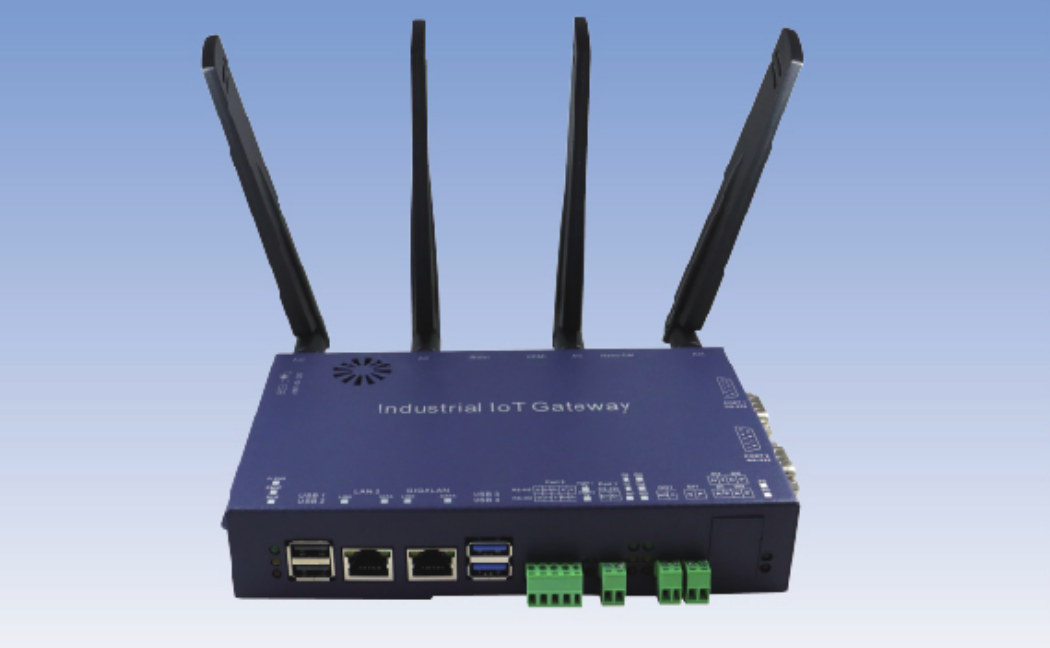PiGear Nano is an Nano-ITX carrier board for Raspberry Pi CM4 (Compute Module 4) designed for industrial applications with a -30°C to +80°C temperature range, 7 to 30V DC input, as well as RS232, RS485, and CAN bus interfaces. The board also features one Gigabit Ethernet port, one HDMI port, MIPI DSI and CSI display & camera interface, M.2 SSD storage, eight USB 3.0 ports, mini PCIe and SIM card sockets for 4G LTE cellular connectivity, and various digital input and output interfaces. Pigear Nano specifications: Supported SoM – Raspberry Pi CM4 and CM4 Lite modules Storage – 1x NVMe SSD M.2 socket, 1x MicroSD card slot for Compute Module 4 Lite only Display I/F – 1x HDMI Type-A connector, 1x MIPI DSI interface x 1 Camera I/F – 1x MIPI CSI interface Networking 1x Gigabit Ethernet RJ45 port Optional 4G LTE/GPRS via mini PCIe socket plus SIM card slot […]
Raspberry Pi CM4 Nano industrial mini PC supports wide temperature range, 12-18V DC input
If you ever wanted a mini PC similar to Raspberry Pi 4 but working within a wider temperature range and supply voltage, as well as a few extra features, the Raspberry Pi CM4 Nano industrial mini PC with a metal enclosure might be worth looking at. Based on the EDATEC CM4 Nano carrier board, the mini PC supports Raspberry Pi CM4 with up to 8GB RAM, 32GB storage, optional WiFi 5 and Bluetooth 5.0, and offers one HDMI port, a flat cable HDMI + Touchscreen connector, Gigabit Ethernet, three USB 3.0 ports and more. It works in settings with -25 to +60°C ambient temperature and offers a 12-18V DC input. EDATEC (Raspberry Pi) CM4 Nano specifications compared to Raspberry Pi 4 SBC: The company uses the Raspberry Pi OS image for the board plus a Board Support Package (BSP) specific to CM4 Nano to support extra features like the RTC: […]
i.MX 8M Plus solderable LGA module follows OSM Size-L standard
SGET Open Standard Module (OSM) specification was ratified in November 2020. It defined specifications for solderable LGA system-on-modules, and we first noticed it though through the launch of F&S Elektronik “FS 8MM OSM-SF” module powered by an NXP i.MX 8M Mini processor, and following OSM Size-S standard (30x30mm). As we noted in our introduction about the Open Standard Module, SGET defined four sizes from Size-0 (30x15mm) to Size-L (45x45mm), and there’s now at least one “Large” OSM module courtesy of iWave Systems, and their iW-RainboW-G40M module equipped with an NXP i.MX 8M Plus processor for AI applications. iW-RainboW-G40M specifications: SoC- NXP i.MX 8M Plus Q/QL/D quad-/dual-core Cortex-A53 processor up to 2.0 GHz, with Arm Cortex-M7 real-time core @ 800 MHz, Vivante GC7000UL 3D GPU, Vivante GC520L 2D GPU, 2.3 TOPS NPU System Memory – Up to 8GB LPDDR4 Memory Storage – Up to 256GB eMMC flash Wireless – 802.11a/b/g/n/ac/ax Wi-Fi […]
Raspberry Pi CM4 carrier board comes with 5x SATA, 4x GbE, 2x HDMI, RS-485 interfaces
We just wrote that Wiretrustee carrier board for Raspberry Pi CM4 with four SATA interfaces was canceled and made open-source hardware a few days ago, but the Axzez Interceptor carrier board is offering a solution that is somewhat similar with 5x SATA ports and designed for NAS, NVR, IoT, and Managed Switch applications. The Interceptor Carrier Board for Raspberry Pi CM4 notably includes two 4Kp60 capable HDMI ports, 5x SATA ports, 4x RJ45 Gigabit Ethernet ports, 4x USB 2.0 interfaces, RS-485, and is powered via an ATX-24 connector, with a Mini-ITX adapter in the works. Axzez Interceptor specifications: Compatible SoM – Raspberry Pi Compute Module 4 Storage Support for 5x SATA HDD/SSD via JMicron JMB585 PCIe to SATA controller Supports software RAID 0, 1, 5, 6 or 10 HDD sleep/standby Video Output – 2x full-size HDMI 2.0 connectors (4Kp60) Networking – 4x Gigabit Ethernet ports via Realtek RTL8367RB switch; programable […]
Sipeed Lichee RV RISC-V module gets $5+ carrier board with HDMI and USB ports, optional WiFi
Sipeed introduced the Lichee RV Allwinner D1 Linux RISC-V board going for just $17 with 512MB RAM last month. While with a USB-C port it could be used as a standalone part, its dual M.2 connector makes it more like a module and we noted a tiny carrier board was in the works at the time. The baseboard is now available and known as the Lichee RV Dock adding HDMI and USB ports, as well as a 40-pin GPIO header for just $5, or $8 if you’d like to get Wi-Fi 4 and Bluetooth 4.2 connectivity through a Realtek RTL8723DS module. Sipeed Lichee RV Dock specifications: Supported system-on-module (SoM) – Lichee RV module with Allwinner D1 RISC-V processor @ 1 GHz, 512MB DDR3, MicroSD card slot, and USB Type-C OTG port Storage – Optional SPI flash Display interfaces HDMI port up to 4Kp30 Optional RGB interface for up to 720p30 […]
MYIR introduces i.MX 8M Plus module and devkit with AI/ML capabilities
There are already plenty of i.MX 8M Plus systems-on-module, but here’s one more courtesy of MYIR Tech with MYC-JX8MPQ i.MX 8M Plus module with as well as MYD-JX8MPQ development board for evaluating the solution. The module is especially well suited to applications leveraging Artificial Intelligence (AI) and Machine Learning (ML) with the NXP Cortex-A53/M7 integrating a 2.3 TOPS Neural Processing Unit (NPU). The module comes with up to 6GB LPDDR4, 128GB eMMC flash, 32MB QSPI flash, a PMIC for power management, as well as a 314-pin MXM 3.0 connector exposing the I/Os from the processor. MYC-JX8MPQ module specifications: SoC – NXP i.MX 8M Plus (MIMX8ML8CVNKZAB) quad-core Cortex-A53 processor @ 1.6 GHz, real-time Arm Cortex-M7 co-processor @ 800 MHz, 2.3 TOPS AI accelerator, 2D/3D GPU, HiFi4 Audio DSP, and 1080p VPU System Memory – 3GB LPDDR4 (option up to 6GB) Storage – 8GB eMMC flash (option up to 128GB), 32MB QSPI […]
Inforce 68A1 SoM supports up to seven 4Kp120 cameras, dual 4Kp120 video encoding/decoding
SMART Wireless Computing has announced the Inforce 68A1, a compact system-on-module based on Qualcomm QCS8250 IoT processor with support for up to seven concurrent 4Kp120 camera inputs, and decode/encode two 4Kp120 video streams simultaneously. Equipped with 8GB PoP DDR5 memory, 64GB UFS storage, a wireless module supporting 802.11ax Wi-Fi 6E and Bluetooth 5.1, the module is designed for high-end IoT applications such as smart cameras, video collaboration, AI hubs, connected healthcare, and smart retail. Inforce 68A1 specifications: SoC – Qualcomm QCS8250 octa-core Kryo 585 processor up to 2.84 GHz (high-performance cores) or 1.8 GHz (low power cores) with Adreno 650 GPU, Adreno 665 VPU, Adreno 995 DPU, Hexagon DSP with quad HVX, NPU230 neural processing unit, Spectra 480 ISP; 15 TOPS AI processing power System Memory – 8GB LPDDR5 (PoP) Storage – 64GB UFS flash Wireless – Qualcomm QCA6391 with 802.11 a/b/g/n/ac/ax Wi-Fi 6 2×2 MIMO, Bluetooth 5.1 Audio – […]
5G IoT/AIoT industrial gateway ships with Raspberry Pi Compute Module 4
WPC-632-Pi CM4 is an industrial IoT gateway based on Raspberry Pi Compute Module 4 with optional 5G or 4G LTE cellular connectivity, that joins other Raspberry Pi CM4 industrial gateways such as CompuLab IOT-GATE-RPI4, CatsPi Industrial Lite, Modberry M500 CM4, among others. The Linux gateway features two Ethernet ports, RS232/RS485 and other I/Os via terminal blocks, mPCIe and M.2 sockets for expansion with 5G modem 4G LTE mode, AI accelerator, or an NVMe SSD, as well as support for 9V to 32V wide-range input power. WPC-632-Pi CM4 industrial gateway specifications: SoM – Raspberry Pi Compute Module 4 with Broadcom BCM2711 quad-core Cortex A72 processor with VideoCore VI GPU, up to 8GB RAM, up to 32GB flash, optional wireless module Storage – Optional PCIe SSD via M.2 key M socket Video and audio output – 1x micro HDMI port up to 4Kp60 with audio Camera – 1x MIPI CSI-2 connector Connectivity […]


